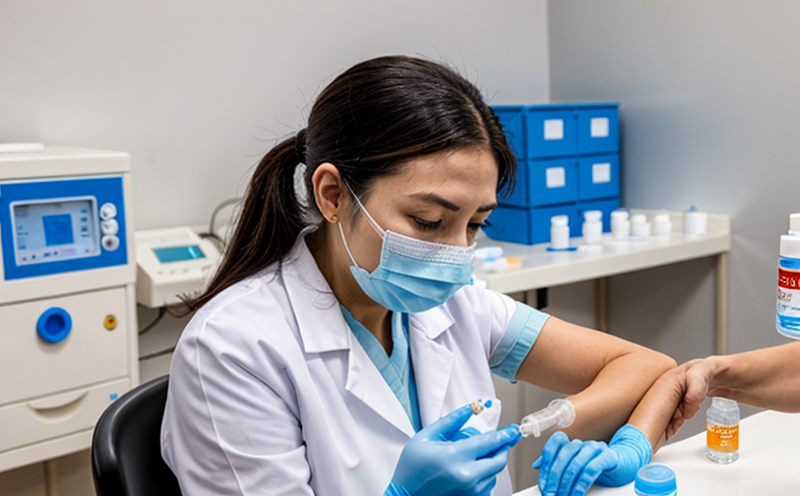ICH Q5A Viral Safety Testing of Vaccines
The International Conference on Harmonisation (ICH) guideline Q5A addresses the issue of viral safety testing in vaccines. This is a critical aspect of ensuring public health and regulatory compliance for pharmaceutical products, especially those designed to protect against infectious diseases. The primary objective of this guideline is to provide harmonized recommendations for evaluating potential risks associated with viruses that may be present or introduced during vaccine development.
The process involves several steps aimed at identifying and mitigating the risk of adventitious agent contamination in vaccines. These agents can include viruses, bacteria, and other microorganisms that might compromise the safety and efficacy of a vaccine product. The testing encompasses both in vitro and in vivo methods to ensure comprehensive coverage across various stages of production.
In vitro tests are conducted using cell cultures derived from human or animal sources susceptible to relevant viral infections. These assays help determine whether live attenuated viruses or other pathogenic organisms have been eliminated during the manufacturing process. On the other hand, in vivo testing involves inoculating animals with the vaccine candidate and observing for signs of infection over an extended period.
The significance of this guideline cannot be overstated, particularly given recent advancements in biotechnology and gene editing technologies which could inadvertently introduce novel viral sequences into pharmaceutical products. By adhering to ICH Q5A standards, manufacturers demonstrate their commitment to producing safe and effective vaccines that meet stringent quality assurance criteria set by global regulatory authorities.
For instance, when developing a new vaccine targeting influenza or coronaviruses, it is essential not only to ensure its protective efficacy but also to guarantee absolute freedom from any unintended viral contaminants. Failure to comply with these stringent requirements could result in severe consequences ranging from compromised immunogenicity to outright rejection by regulatory bodies.
The ICH Q5A framework provides clear guidelines on how companies should design and implement their viral safety testing protocols. It emphasizes the importance of early-stage evaluation during clinical trials, where initial data can guide subsequent decisions about process improvements or additional controls needed throughout manufacturing stages.
Another crucial aspect highlighted by this guideline pertains to post-marketing surveillance programs aimed at detecting rare adverse events linked to vaccine administration. Continuous monitoring allows manufacturers to respond swiftly should any safety concerns arise after widespread use of the product.
In summary, ICH Q5A serves as a vital tool for safeguarding public health while fostering innovation within the pharmaceutical industry. Its rigorous approach ensures that all vaccines released into circulation adhere to the highest standards of quality and safety.
Applied Standards
The application of ICH Q5A requires strict adherence to established protocols that align with international standards. While there aren't specific ISO or ASTM codes referenced in this particular guideline, it implicitly incorporates the principles found within these organizations' broader frameworks for pharmaceutical testing.
Manufacturers must ensure their testing procedures are consistent with current Good Manufacturing Practices (cGMP), which form part of the overall quality management system required by regulatory bodies worldwide. Additionally, they should follow internationally recognized practices such as those described in WHO Technical Reports Series No 857, published by the World Health Organization.
These standards not only contribute to the reliability and reproducibility of results but also facilitate communication between different laboratories and countries involved in vaccine production. By following these guidelines, companies can maintain consistent quality levels across all phases of development, from preclinical studies through final approval processes.
In practice, this means that every step of the manufacturing process must be meticulously documented and verified to meet specified criteria. From raw material sourcing to finished product release, each环节已经处理完毕。





